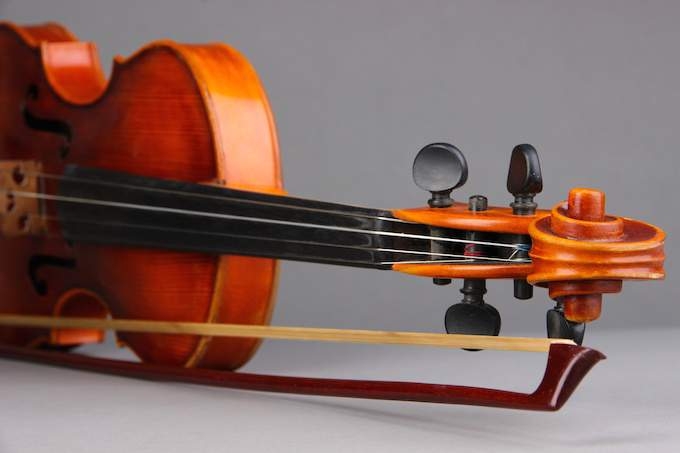The performing arts calendar in Nice and Monte-Carlo is bursting with activity once again this month, with something for everyone.
We have classical concerts, ballets, a Bel Canto Gala and a Shostakovich opera. In this, the first of two articles on events in April, we take a look at what’s on in Nice.
The Opéra de Nice symphonic season features two programs this month. In an all-Mahler programme, Philippe Augin directs the Nice Philharmonic in performances of Mahler’s Rückert-Lieder and his Symphony No 9.
The Rückert-Lieder is a cycle of five songs based on poems by German poet and translator Friedrich Rückert (1788 – 1866). Swedish baritone Peter Mattel is the guest soloist – an artist well known for his performances in works by Mozart and who is frequently invited to perform in recitals.
Mahler’s Symphony No 9 – the last symphony that he completed – was written at a time when the composer was said to be preoccupied with mortality. The composer Alban Berg took a less pessimistic view of it though, describing the symphony as an expression of love for the earth, and of a longing to live on it peacefully, to enjoy nature to the full, before death comes.
The all-Mahler programme takes place at Opéra de Nice on April 3rd and 4th.
Maestro Augin follows these performances with a programme pairing the music of Arnold Schoenberg with that of Beethoven. Schoenberg – the Austrian composer who came to be known as one of the most dominant and controversial figures in contemporary music – is represented by his Chamber Symphony No 1, and his Ode to Napoleon Bonaparte, set to a text by Byron. German actress Sunnyi Melles is récitante.
{youtube}vj4JFAQ0N8c?rel=0{/youtube}
The Beethoven work is his Symphony No 3, subtitled the Eroica, a work which he dedicated to Napoleon, changed his mind when he heard that Bonaparte had declared himself emperor, then instructed his publisher to include the subtitle Heroic Symphony, Composed to celebrate the memory of a great man.
The performances of the works by Schoenberg and Beethoven take place on April 10th and 11th at the CNNR.
The first of the two Matinées musicales in April is devoted almost entirely to music by J S Bach – his Brandenburg Concertos Nos 3, 4 and 6 – and also features a Concerto for Two Flutes and Orchestra by Johann Joachim Quantz, the 18th century German flutist, flute maker and composer of flute sonatas and concertos, and who also wrote On Playing the Flute, a treatise on flute performance. The soloists in this concerto are Isabelle Demourioux and Virginie Diquero, and the concert takes place at the Opéra de Nice on April 5th.
On 26th April, the Matinée musicale at Opéra de Nice features a journey through the ages by the brass section of the Nice Philharmonic – from Giovanni Gabrielli to Richard Strauss.
Ballet Nice Méditerranée, under the artistic direction of Éric Vu-An, presents a double bill – Jerome Robbins’ En Sol, and one of the great classics of the Romantic Era, La Sylphide. The Nice Philharmonic Orchestra is led by British conductor, David Garforth.
{youtube}JRmbB7LMhOs?rel=0{/youtube}
En Sol is the name adopted by the French for the Robbins ballet Concerto in G – which later became known as In G Major – and which he choreographed for the New York City Ballet’s Ravel Festival in 1975, to mark the 100th anniversary of the composer’s birth. Robbins wrote the ballet for Suzanne Farrell – one of the most celebrated of Balanchine’s muses at NYCB – upon her return to the Company after a four-year spell with Maurice Béjart’s Ballet du XXe Siècle. The work – which attracts descriptions such as “whimsical” and “playful”, also has an exquisite, serenely elegant pas de deux. It’s set to Ravel’s gorgeous Piano Concerto in G Major, which he wrote in the late 1920s – following his return from a triumphant tour of the United States – and which he described as using “certain effects borrowed from jazz, but only in moderation”. The soloist in these performances is pianist Francesca Tosi.
La Sylphide was first performed in Paris in 1832, the original choreographer having been Italian dancer and choreographer, Filippo Taglioni, who was also the father – and personal teacher – of the most famous of Romantic Era dancers, Marie Taglioni. Taglioni set his ballet to music by Jean-Madeleine Schneitzhoeffer, and a libretto by Adolphe Nourrit. Within a few years, another version of the ballet, with the same libretto, was created by Danish ballet master and choreographer, August Bournonville, to a score by Herman Løvenskjold. It premiered in Copenhagen in 1836, and today is the only surviving the version of La Sylphide.
The choreography for the Ballet Nice production is by Dinna Bjørn, after August Bournonville, with the participation of Eric Vu-An. Dinna Bjørn is a Danish dancer and choreographer, who specialises in dancing and directing Bournonville’s ballets.
La Sylphide is set in Scotland, and tells the story of James, a young farmer, who – on the morning of his wedding – is tempted away by a beautiful spirit. In the forest, he is given a magical scarf by a witch who tells him that the scarf will bind the sylph so that he can keep her forever. Tragically, though, as he wraps it around the sylph’s shoulders, her wings fall off and she dies – and James returns home, only to see his bride-to-be, Effy, marry his best friend.
{youtube}6Mz7G4TNg6g?rel=0{/youtube}
Ballet Nice Méditerranée presents En Sol and La Sylphide from April 17th to 25th. For details of the dates and times, and to book tickets, visit the Opéra Nice website.
Gilly Lloyd is a journalist, copy and creative writer, and editor of Preview, as well as a regular contributor to the Arts section of Examiner.com
Lead image © Africa Studio on Dollar Photo Club




Leave a Reply